
VDOE resource to assist in the tracking of content in second grade science. This is a resource that divisions or schools may use as needed.
- Subject:
- Science
- Material Type:
- Teaching/Learning Strategy
- Author:
- Anne Petersen
- Date Added:
- 04/17/2020

VDOE resource to assist in the tracking of content in second grade science. This is a resource that divisions or schools may use as needed.
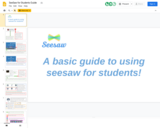
Ryan Dixon of Virginia Beach created this presentation for students about the basics of using SeeSaw.

Explore different types of attractions between molecules. While all molecules are attracted to each other, some attractions are stronger than others. Non-polar molecules are attracted through a London dispersion attraction; polar molecules are attracted through both the London dispersion force and the stronger dipole-dipole attraction. The dipole-dipole attraction is often thought of as 'opposite charges attract; like charges repel.' The force of attractions between molecules has consequences for their interactions in physical, chemical and biological applications.

Explore your own straight-line motion using a motion sensor to generate distance versus time graphs of your own motion. Learn how changes in speed and direction affect the graph, and gain an understanding of how motion can be represented on a graph.

Explore the pattern of earthquakes on Earth, including magnitude, depth, location, and frequency.
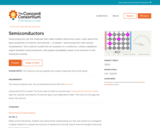
Semiconductors are the materials that make modern electronics work. Learn about the basic properties of intrinsic and extrinsic or 'doped' semiconductors with several visualizations. Turn a silicon crystal into an insulator or a conductor, create a depletion region between semiconductors, and explore probability waves of an electron in this interactive activity.
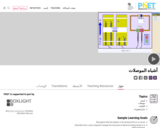
Dope the semiconductor to create a diode. Watch the electrons change position and energy.

I use this lab after having students study the physical properties of matter. In this lab, students will identify physical properties of the different types of matter in the mixture and they will plan a procedure for separating their mixture. They will then carry out the procedure and measure the percent recovery for each of the components of their mixtures.

Science Instructional Plans (SIPs) help teachers align instruction with the Science Standards of Learning (SOL) by providing examples of how the content and the scientific and engineering practices found in the SOL and curriculum framework can be presented to students in the classroom.

Science Instructional Plans (SIPs) help teachers align instruction with the Science Standards of Learning (SOL) by providing examples of how the content and the scientific and engineering practices found in the SOL and curriculum framework can be presented to students in the classroom.

Science Instructional Plans (SIPs) help teachers align instruction with the Science Standards of Learning (SOL) by providing examples of how the content and the scientific and engineering practices found in the SOL and curriculum framework can be presented to students in the classroom. This lesson focuses on the history and evolution of the Earth.This lesson includes the WIDA English Language Development Standards for ELs and differentiation through additional supports for both ELs and other students
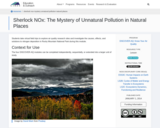
Students take virtual field trips to explore air quality research sites and investigate the causes, effects, and solutions to nitrogen deposition in Rocky Mountain National Park during this module.

The questions in this activity help students to understand the effects of consuming sports drinks and when and how the consumption of sports drinks can be beneficial or harmful. This activity provides the opportunity to review some basic concepts related to osmosis, cellular respiration, mammalian temperature regulation, and how our different body systems cooperate to maintain homeostasis.
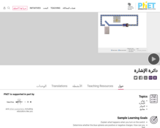
Why do the lights turn on in a room as soon as you flip a switch? Flip the switch and electrons slowly creep along a wire. The light turns on when the signal reaches it.
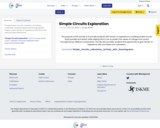
Provided basic circuitry materials, including a multimeter, students experiment through guided inquiry to gain hands-on experience with Ohm's Law and Equivalent Resistance.

Here is a simple lab report that can be used in any science class (6-12). The report is designed to help students identify hypotheses, independent and dependent variables, controls, constants, and to analyze experiments. I have also included tips on a simple way to teach your students to identify the IV and DV through a "cave man hypothesis" and how to teach controls with less confusion.

Students will use this lesson as a culminating activity in their simple & compound machines unit. After learning the characteristics of the six simple machines and how to distinguish between simple and compound machines, the students will then be able to sort pictures into 2 main categories (simple & compound) then into the 6 subcategories (lever, inclined plane, screw, pulley, wedge, wheel & axle). Students will then be able to understand how programmers create programs to do the same type of work.

Science Instructional Plans (SIPs) help teachers align instruction with the Science Standards of Learning (SOL) by providing examples of how the content and the scientific and engineering practices found in the SOL and curriculum framework can be presented to students in the classroom.

VDOE resource to assist in the tracking of content in sixth grade science. This is a resource that divisions or schools may use as needed.

Science Instructional Plans (SIPs) help teachers align instruction with the Science Standards of Learning (SOL) by providing examples of how the content and the scientific and engineering practices found in the SOL and curriculum framework can be presented to students in the classroom.